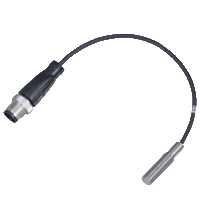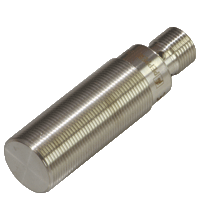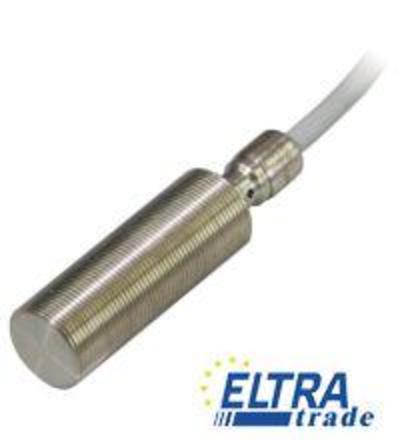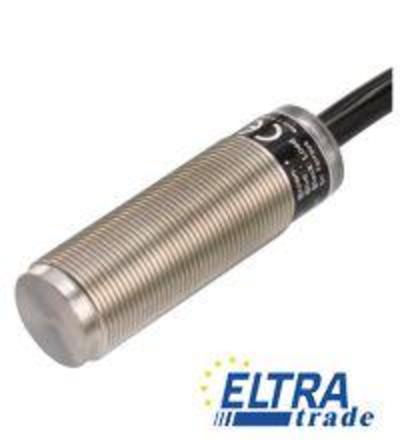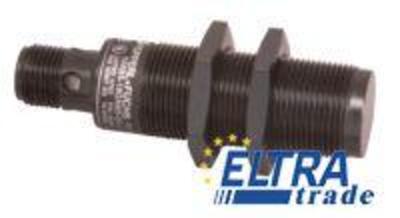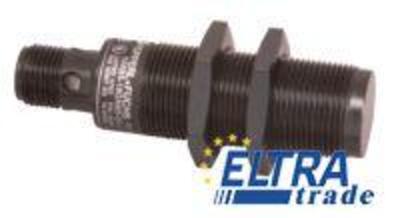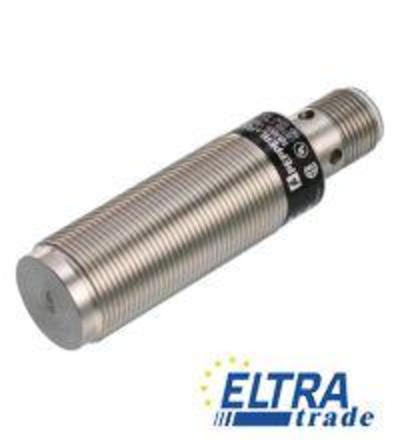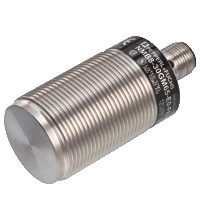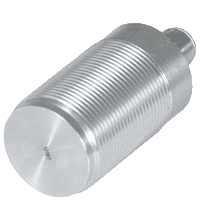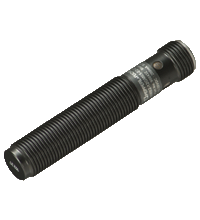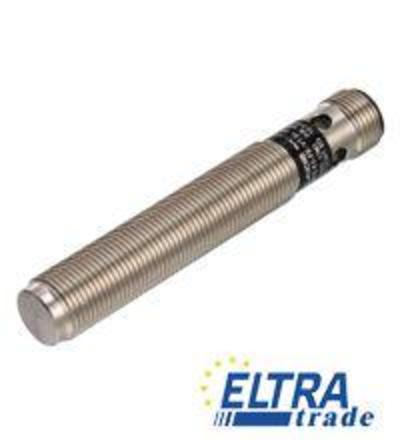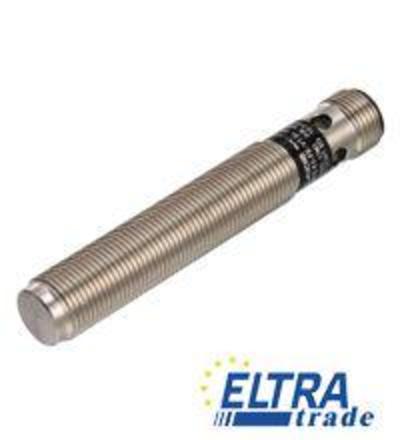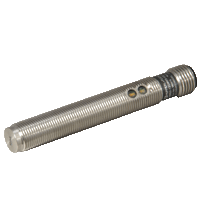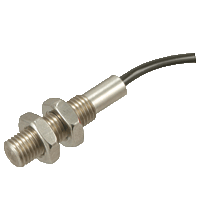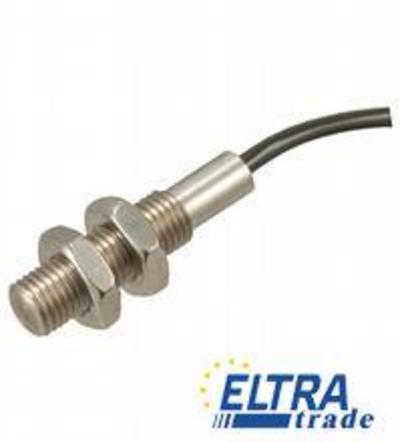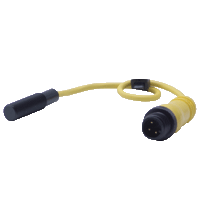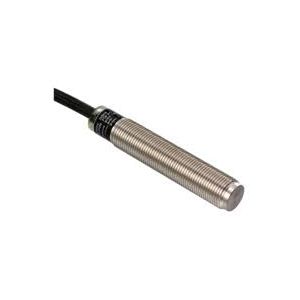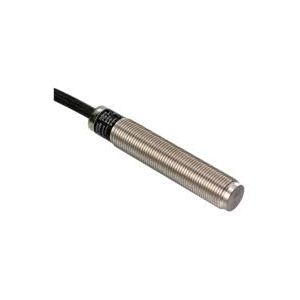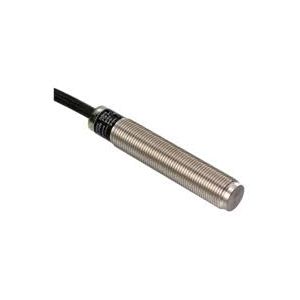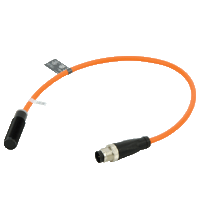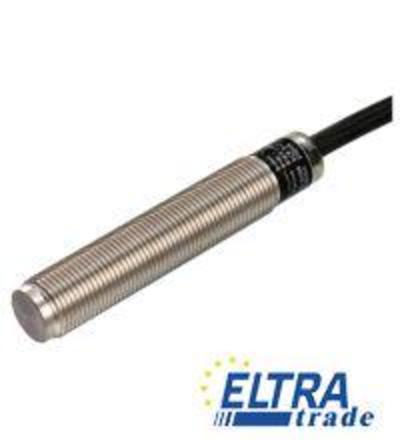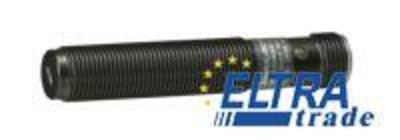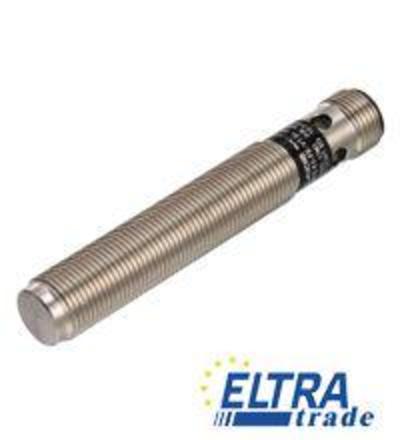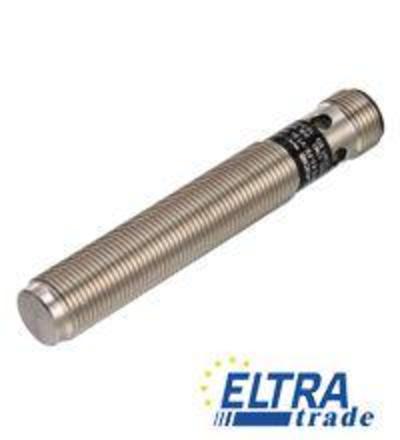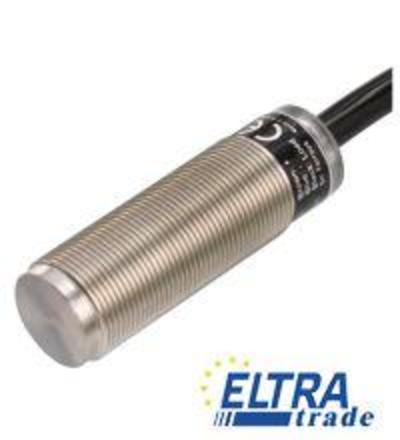Pepperl+Fuchs NMB - NMN Cylindrical sensors
- Stainless steel sensing face
- Sensing range 1.5 mm
- 3-wire DC
- Stainless steel sensing face
- Sensing range 1.5 mm
- 3-wire DC
- 10 mm flush
- Active surface metal
- One-piece housing with stainless steel (V4A- 1.4435)
Series: Cylindrical type, Housing diameter: 18 mm, Housing material: Stainless steel 1.4305 / AISI 303, Rated operating distance: 10 mm, Connection type: Connector M12 x 1 , 4-pin, Output type: 3-wire, Installation: flush (Requirements: see drawing below), Type of voltage: DC
- 10 mm flush
- Stainless steel sensing face
- Increased operating distance
- Stainless steel sensing face
- Sensing range 10 mm
- 2-wire DC
- Nonferrous targets
- 15 mm flush
- Stainless steel sensing face
- Increased operating distance
- Stainless steel sensing face
- Sensing range 2 mm
- 3-wire DC
- Weld field immune
- Weld slag resistant coating
- Ferrous targets
- Stainless steel sensing face
- Sensing range 2 mm
- 2-wire AC/DC
- Ferrous targets
- 3 mm flush
- Stainless steel sensing face
- Increased operating distance
- 3 mm flush
- Stainless steel sensing face
- Increased operating distance
- Weld Immune
Series: Cylindrical type, Housing diameter: 8 mm, Housing material: Xylan coated - Stainless steel 1.4305 / AISI 303, Rated operating distance: 3 mm, Connection type: Connector M12 x 1 , 4-pin, Output type: 3-wire, Installation: flush, Type of voltage: DC
Series: Cylindrical type, Housing diameter: 8 mm, Housing material: Stainless steel 1.4305 / AISI 303, Rated operating distance: 3 mm, Connection type: Connector M12 x 1 , 4-pin, Output type: 3-wire, Installation: flush, Type of voltage: DC
Series: Cylindrical type, Housing diameter: 8 mm, Housing material: Stainless steel 1.4305 / AISI 303, Rated operating distance: 3 mm, Connection type: Connector M8 x 1 , 3-pin, Output type: 3-wire, Installation: flush, Type of voltage: DC
- Stainless steel sensing face
- 3 mm flush
- Increased operating distance
- 5 mm flush
- Stainless steel sensing face
- 2-wire DC
- Weld field immune
- Weld slag resistant coating
- Pigtail quick disconnect
Series: Cylindrical type, Housing diameter: 12 mm, Housing material: Stainless steel 1.4305 / AISI 303, Rated operating distance: 5 mm, Connection type: cable PUR , 2 m, Output type: 3-wire, Installation: flush (Requirements: see drawing below), Type of voltage: DC
Series: Cylindrical type, Housing diameter: 12 mm, Housing material: Stainless steel 1.4305 / AISI 303, Rated operating distance: 5 mm, Connection type: Connector M12 x 1 , 4-pin, Output type: 3-wire, Installation: flush (Requirements: see drawing below), Type of voltage: DC
Pepperl+Fuchs is a leading manufacturer of industrial sensors and automation technology, including a wide range of cylindrical sensors designed for various applications in industrial automation. Pepperl+Fuchs sensor technology is known for its precision, durability, and reliability, making them essential components in many industrial processes. Today we will talk in more detail about the NMB - NMN series for industrial use.
NMB and NMN Sensor Series Overview
Cylindrical NMB / NMN series sensors are proximity sensors used in various industrial applications to detect the presence or absence of metal objects without physical contact. These sensors operate on the principle of electromagnetic induction and are known for their reliability and durability in harsh industrial environments.
Let's find out the main Pepperl+Fuchs NMB - NMN sensor applications.
- Object detection. Cylindrical NMB and NMN sensors are often used for basic object detection applications. They can detect the presence or absence of metal objects, making them suitable for tasks such as counting products on a conveyor belt or checking the presence of components on an assembly line.
- Automation of machines. These sensors play a decisive role in the automation of machines and equipment. They can be used to trigger specific actions or control the movement of robotic arms when the presence or location of parts is detected.
- Packing and sorting. Packaging lines use Pepperl+Fuchs cylindrical sensors to ensure precise positioning and sorting of products. They help coordinate the sealing, labeling, and packing processes of packages.
- Loading and unloading operations. Cylindrical inductive sensors are commonly used in material handling systems to monitor the presence of materials, parts, or products on conveyor belts and other transport systems. They help prevent collisions and congestion.
- Quality control. These sensors are used in quality control processes to verify that products are assembled correctly. They can ensure that components are in the correct position before further processing.
- Conveyor control. NMB and NMN sensors can control conveyor belts by detecting the presence of objects and adjusting the speed or stopping the conveyor if necessary. This is vital to smooth material flow and prevent damage.
- Security systems. In industrial settings, these sensors are used for safety purposes. They can detect the presence of personnel in hazardous areas, activating safety interlocks or emergency shutdowns to ensure worker safety.
- Tool detection. In machining and metalworking, these sensors are used to detect the presence of tools or workpieces on machine tables. They can help prevent accidents and equipment damage.
- Automation of production. Cylindrical sensors are an integral part of factory automation systems, helping improve manufacturing processes' overall efficiency and productivity.
- Assembly lines. These devices are used on assembly lines to ensure that components are positioned correctly for assembly, welding, or other manufacturing processes.
- Materials and parts tracking. Such sensors track the movement of materials or parts throughout a plant, providing data for inventory management and production planning.
Pepperl+Fuchs NMB / NMN Cylindrical Sensors
Pepperl+Fuchs sensors do not require physical contact with the target object, reducing wear and tear and minimizing maintenance requirements. These sensors are primarily used for detecting metallic objects within their sensing range. Also, such devices are designed to withstand harsh industrial environments, including exposure to moisture, dust, vibration, and temperature extremes.
They come in various sensing ranges, allowing you to choose a sensor that suits your specific application requirements. NMB - NMN sensors are designed to be space-efficient, making them suitable for applications with limited mounting space. Depending on the model, inductive sensors can provide fast response times and high accuracy.
These sensors can interface with programmable logic controllers (PLCs) and other automation equipment, enabling their seamless integration into larger automation systems. Pepperl+Fuchs offers a range of sensor models within their inductive sensor category, each with specific features and specifications tailored to different applications.
Installation and Integration
For the installation and integration of any sensors, you typically need to follow the manufacturer's guidelines and recommendations provided in the sensor's datasheet or user manual. Here are some steps to consider when installing and integrating the P+F NMB and NMN sensor series.
- Start by carefully reading the datasheet and user manual provided by the sensor manufacturer. This documentation will contain important information about the sensor's specifications, installation requirements, and wiring details.
- Determine the optimal location for sensor placement based on your application requirements. Consider factors such as the sensing range, the type of material to be detected, and environmental conditions.
- Ensure that the sensor is securely mounted in its designated location. Proper mounting is crucial to maintain sensor accuracy and reliability.
- Connect the sensor to your control system following the wiring instructions provided in the manual. Pay close attention to the correct wiring of the power supply, ground, and output signals.
- Depending on the sensor and application, you may need to configure its settings using any adjustment or configuration tools provided by the manufacturer. This can involve adjusting sensitivity, response time, and other parameters.
- After installation and configuration, conduct thorough testing and calibration to verify that the sensor operates as expected. Check for false triggers or missed detections.
- Ensure that the sensor's output is correctly integrated into your control system or automation setup. This may involve connecting to a programmable logic controller (PLC), distributed control system (DCS), or other control devices.
- If the sensor is used in a safety-critical application, follow safety guidelines and standards applicable to your industry. Implement safety features and redundancy as needed.
- Maintain comprehensive documentation of the sensor installation, configuration, and integration for future reference and troubleshooting.
- Regularly inspect and maintain the sensor to ensure it continues to function optimally. Clean the sensor if necessary, and replace any damaged components promptly.
